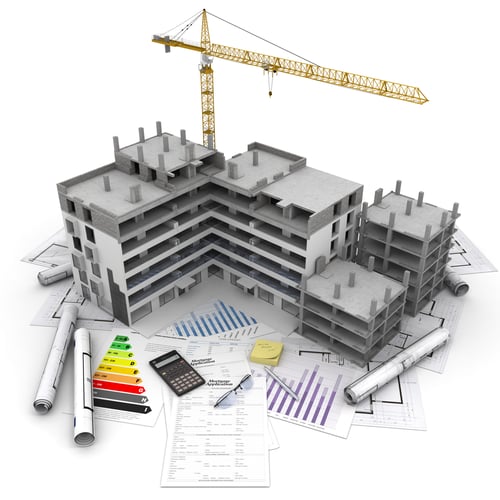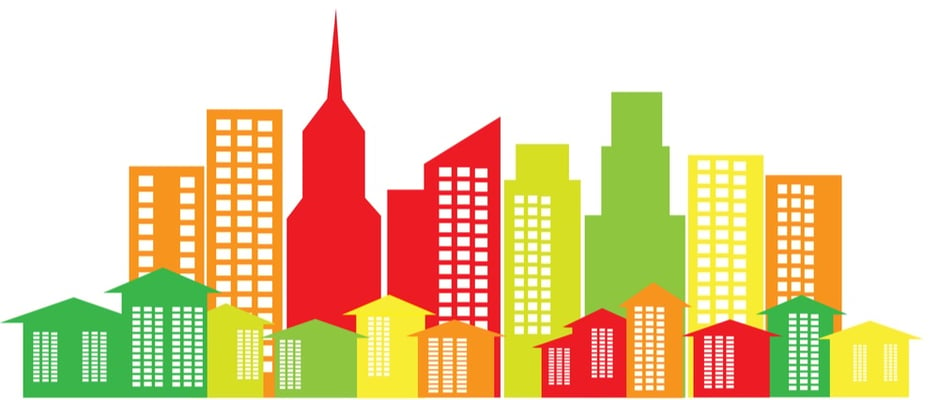How Energy Modeling Leads to Better Investment Decisions

Electricity and gas bills are among the largest operating expenses in buildings, especially if the installations are old and their maintenance has been deficient. Energy efficiency measures are excellent building upgrades from a financial standpoint, but their estimated savings are not accurate. Energy modeling is a powerful tool in these cases, since building owners can quickly compare the effectiveness of many potential upgrades.
When energy efficiency measures are deployed, their payback period is often calculated based on the typical savings reported by vendors. However, these savings are based on assumed conditions that may not be valid for your building. Once the energy efficiency project is completed, the actual performance can be very different from projected savings. This works in your favor if the actual savings are higher than expected, but there are also cases in which an energy efficiency measure achieves little or no savings.
Find the best energy efficiency measures for your building project with energy modeling.
The usefulness of energy modeling increases along with the scale and complexity of the project, since more capital is involved. In minor upgrades with small costs and small energy savings, the cost of creating a full energy model of the building may not be justified. However, energy modeling itself can be considered an investment in larger projects, since it makes sure that capital is used effectively.
Energy Modeling as a Decision-Making Tool
There are many energy efficiency measures for buildings, and their effectiveness varies depending on project conditions. The optimal combination of energy efficiency measures changes by project, and this is why building retrofits require a customized approach.
Energy modeling is a very useful tool when comparing many design options: once the building model is created, you can simulate several scenarios in a matter of hours. Completing a similar analysis with manual calculations and spreadsheets would require an excessive amount of time.
- For example, if a building owner is considering several HVAC configurations, the energy model can be simulated with each option.
- The project developer can then compare costs and energy consumption for each HVAC configuration, and choose the one with the lowest ownership cost.
Energy modeling can also be used to analyze how different energy efficiency measures interact. For example, if the lighting system is upgraded to LED, the energy model will simulate how the air conditioning system responds to the reduced heat output of LED lighting.

When energy modeling is used in the design stage of a new construction or major renovation, MEP engineers can also optimize the upfront cost. Energy efficiency measures that are not effective can be discarded, and those with a high return per dollar invested can be prioritized.
Energy modeling can also be used for code compliance, speeding up the project approval with local authorities. For example, the NYC energy code provides a long list of prescriptive measures for building projects. However, if developers can demonstrate performance with energy modeling instead, the prescriptive requirements can be avoided.
Improving Existing Buildings with Energy Modeling
The applications of energy modeling go beyond comparing several design options for new constructions. An energy model is also a useful tool when retrofitting an existing building:
- An energy model of the existing building can be created and simulated.
- Then, the actual energy performance of the building can be compared with the theoretical performance of the energy model.
- In this case, the simulation results establish a benchmark for the retrofit project.
- Energy modeling can also be used to determine which building systems are wasting the most energy, based on a comparison between modeled and actual components.
Meeting the NYC Green New Deal

Also known as the Climate Mobilization Act, the NYC Green New Deal is a major technical challenge for the NYC building sector, since it mandates significant emissions cuts starting from 2024. Energy modeling can help building owners meet these targets more efficiently, by finding the optimal combination of upgrades for each building.
Building emissions are strongly related with energy consumption. To reduce greenhouse gas emissions, building owners can follow two complementary strategies:
- Reducing energy consumption.
- Switching to energy sources with a lower environmental footprint.
Energy modeling can also be used to compare the emissions of several building upgrade options. Since energy consumption is calculated for each option, it is just a matter of adding the emissions intensity of each source to the energy model.

Anuj Srivastava
Anuj Srivastava is a principal partner at NY Engineers. He is known for his MEP franchise market knowledge. Anuj is currently leading a team of 100+ MEP/FP engineers and has successfully led over 1500 franchise projects in the US.
Join 15,000+ Fellow Architects and Contractors
Get expert engineering tips straight to your inbox. Subscribe to the NY Engineers Blog below.

